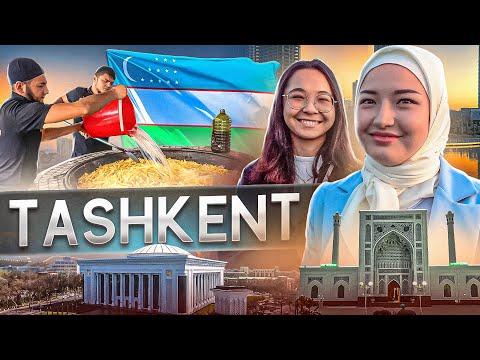As I stood in the bustling heart of Tashkent, the capital city of Uzbekistan, I couldn’t help but marvel at the way this ancient city has seamlessly intertwined its rich past with its dynamic present. My journey to Tashkent had been both an exploration of historical grandeur and a dive into the modern pulse of this Central Asian gem.
My first encounter with Tashkent’s history began in the old city, where I walked the cobblestone streets that have borne witness to centuries of change. It was here, amidst the vibrant markets and the scent of spices lingering in the air, that the echoes of the Silk Road seemed to whisper stories from long ago. The Silk Road, that legendary network of trade routes that connected the East to the West, had its heart beating strongly in Tashkent. As I wandered through the Chorsu Bazaar, one of the oldest and most colorful markets in Central Asia, I could almost see the traders of old haggling over silk, precious stones, and exotic spices. The bazaar, with its labyrinthine alleys and bustling atmosphere, was a living relic of that bygone era.
The architectural landscape of Tashkent is a striking fusion of ancient and modern. The old structures, like the Kukeldash Madrasah and the Barak Khan Madrasah, stand as stoic sentinels to the past. Their intricate tile work and majestic domes are a testament to the city’s significance during the height of the Silk Road trade. As I wandered through these historical sites, I was struck by the profound sense of continuity they represented. It was as if time itself had paused in these spaces, allowing me to experience a fragment of the city’s storied past.
Yet, Tashkent is not just a city stuck in the past. The contrast between the historical landmarks and the contemporary structures is a visual representation of Uzbekistan’s journey from its Silk Road roots to modernity. I took a stroll through the city center, where sleek glass buildings and modern architecture stand in stark contrast to the traditional designs of the old city. The Tashkent Tower, an iconic symbol of modern Uzbekistan, soared above the skyline, its observation deck offering a panoramic view of the city’s evolution.
One of the most intriguing aspects of Tashkent is its ability to blend these two worlds. As I visited the Independence Square, I was enveloped in the modern spirit of the city. The square, a symbol of Uzbekistan’s sovereignty and progress, is surrounded by grand government buildings and lush gardens. The transition from the old-world charm of the Silk Road era to the contemporary feel of Independence Square was a striking reminder of how Tashkent has continuously evolved while honoring its rich heritage.
The city’s museums also offer a glimpse into this evolution. At the State Museum of History of Uzbekistan, I delved into exhibits that traced the trajectory from the ancient Silk Road to the Soviet era and beyond. The displays of ancient artifacts, including pottery, textiles, and manuscripts, provided a tangible connection to the past. Yet, the modern galleries showcasing Uzbekistan’s post-independence development highlighted the nation’s strides in embracing the future while retaining its cultural identity.
Tashkent’s culinary scene further exemplifies this blend of old and new. The traditional Uzbek dishes, such as plov and lagman, are served alongside more contemporary fare, reflecting the city’s diverse influences and evolving tastes. I enjoyed a meal at a restaurant where the menu featured both classic recipes passed down through generations and innovative dishes that incorporated global flavors. The culinary experience was a microcosm of Tashkent itself: a place where tradition and modernity coexist harmoniously.
As I explored the city’s cultural life, I was struck by how Tashkent has embraced its role as a bridge between different eras and cultures. The vibrant arts scene, from traditional performances to contemporary exhibitions, demonstrated the city’s commitment to celebrating its heritage while pushing forward into the future. I attended a performance at the Alisher Navoi Opera and Ballet Theatre, where classical Uzbek music and dance were presented with a modern twist, illustrating how Tashkent’s artistic expressions continue to evolve while respecting their origins.
The people of Tashkent were, without a doubt, the most compelling part of my experience. Their warmth and hospitality were matched only by their pride in their city’s dual identity. Conversations with locals revealed a deep appreciation for the historical significance of their city and an enthusiastic embrace of the future. The sense of continuity and change was not just evident in the city’s physical landscape but also in the lives and stories of its inhabitants.
Leaving Tashkent, I felt a profound sense of connection to both its ancient past and its vibrant present. The city’s ability to honor its Silk Road heritage while embracing modernity is a testament to its resilience and adaptability. As I looked back one last time at the skyline, where ancient minarets stood alongside modern skyscrapers, I realized that Tashkent is not just a place where history and modernity coexist but where they actively enrich each other, creating a city that is both timeless and ever-evolving.
